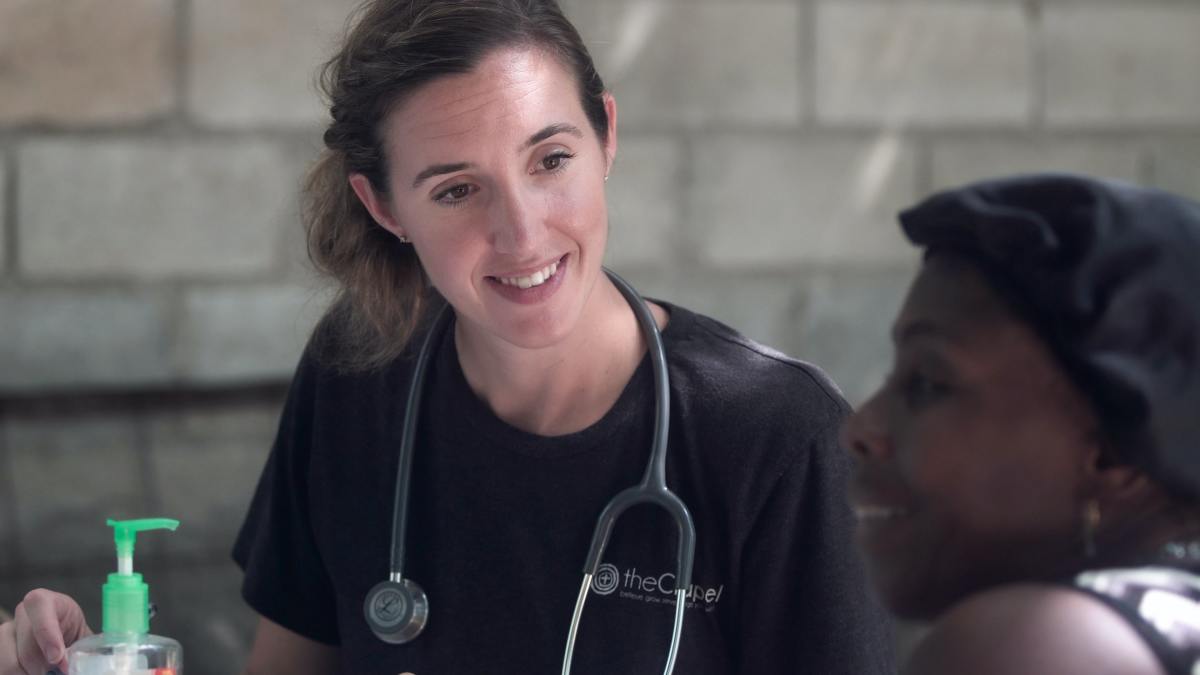
How Much Can Registered Nurses Earn in 2023?
A lot of factors come into play. Think: demand, specialization, [...]
The NCLEX-RN is a comprehensive, computer-adaptive test that all graduates of nursing programs must pass in order to be licensed as registered nurses in the U. S. It’s not an exam to be taken lightly, but with good preparation and a few tips, you can definitely master it!
First and foremost, prepare thoroughly for this exam. In nursing school, you were probably introduced to the testing format of the NCLEX-RN, but if not, now is the time to familiarize yourself with it. There are a variety of questions that show up on this exam — including standard multiple-choice, multiple-response (sometimes referred to as “choose-all-that-apply”), fill-in-the-blank math calculations, ordered-response for nursing procedures, and hot-spots identification.
Although the NCLEX-RN has several different types of questions, there are some basic strategies that can be applied to most of them:
Take each question at face-value. If you are making assumptions about information that hasn’t been provided and basing your answer on these assumptions, you are more likely to select an incorrect response. Stay focused on exactly what the question is asking because the examiners are trying to determine whether you possess the minimum level of nursing knowledge to provide safe care to patients. You don’t want to be drawn off course by an answer choice that contains distractors or that has nothing to do with what the question is asking.
Although as a licensed nurse you’ll be working in real settings, the exam questions presume an ideal world. Assume that you have all the staff and supplies you could hope for. That is, if a question asks what the appropriate intervention is when a post-surgical patient attempts to get out of bed, the best choice would be to provide one-on-one supervision. Students often mistakenly base their choices on experience working in short-staffed units — and as a result, they select the answer that aligns with their experience and not the ideal circumstances presumed on the NCLEX-RN.
While it may sometimes be necessary to choose a more invasive procedure, you want to opt for lower levels of intervention when they are reasonable. If you consider the example mentioned above, it would be more appropriate to choose one-on-one supervision (less invasive) than restraints or medications (more invasive).
Without fail, ask yourself, “What is best for the patient?” A response that privileges making the nurse’s job easier is rarely correct. Again, considering the earlier example, it would be easier for the nurse to restrain the patient, but one-on-one supervision would be the patient-focused response.
Follow the steps on this checklist to set yourself up for success on the NCLEX-RN.
You want to determine what the real stem of each question is. To do this, reword it to remove distractors and discern the “true” question. For example, a question that describes a patient who is prescribed Percocet after a colon resection may ask what the purpose of the Percocet is. Students should reword the question to ask, “Why do patients get Percocet after surgery?” and ignore the type of surgery — it’s a distractor and irrelevant.
In addition, be sure that your answer matches what the question is asking. In other words, if a question describes a respiratory issue, your response should relate to this function and not to another body system.
Assessments are practices a nurse will use to monitor or observe, while interventions are actions she will take in caring for the patient. For example, a question might describe a patient who is having respiratory difficulties and ask what assessment a nurse would perform. The correct answer would relate to observing the patient’s respiratory status, such as checking oxygen saturation or auscultating (or listening to) the lungs. By contrast, if the question asks what intervention should be performed, the correct response might involve applying oxygen or obtaining orders for a blood gas level.
Physical needs, beginning with those that are life-threatening, will always take precedence over psychosocial needs. For example, with our respiratory-distress patient, the priority would be to stabilize the patient but not necessarily to provide reassurance. In each situation, the student needs to think about what the priority is for a patient in a life-threatening situation.
One of the most challenging types of questions you’ll face are the multiple-response, or select-all-that-apply,problems. You must choose all of the correct answers to receive full credit for the question.
These questions may be hard, but they indicate you are performing well on the exam. If you see a number of these questions, it’s because the CAT algorithm has determined that you have a strong command of the topic, and so it is accordingly rolling multiple questions into a single one with multiple answers.
The best way to be prepared is to know the content thoroughly. When you get this type of question, spend time analyzing the question and thinking about your answers before looking at the choices. Then, treat each answer choice as a true/false statement.
You will need to recall your medication calculation rules and formulas, and practice until you can answer these questions with some ease. On the actual NCLEX-RN, once you calculate the answer, enter it right into the computer.
As you’ll certainly remember from your education, the nursing process includes Assess, Diagnose, Plan, Intervention, and Evaluation. Remember these steps when tackling ordered-response questions because you’ll be asked to move the answers into the appropriate order. You may be given a nursing diagnosis and asked to determine appropriate interventions, goals, or plans — and to order them correctly according to their priority. Or you may be asked to choose the appropriate nursing diagnosis from the given answers based on the information provided in the question.
You’ll be shown a picture and asked to click on the onscreen area that the question refers to. For example, a typical question might ask you to identify where you would listen for heart tones or fetal monitoring tracing.
_Follow this link for general test-taking strategies to help you master any exam._
Because the NCLEX-RN seeks to determine if prospective nurses have the knowledge to care safely for patients and the skills to intervene if necessary, the exam weights action over inaction. Typically, questions will ask which step(s) to take in the scenario described, so you’ll want to reconsider answers that don’t demonstrate action on the part of the nurse.
Below is some advice about responses that you want to keep in mind:
Although the NCLEX-RN gives students a maximum of six hours to complete the exam, this is a long time to perform high-level thinking in a stressful environment. Remember that the algorithm of computer-assisted testing (CAT) is constantly analyzing your capabilities in order to determine your competency within the test plan. You want to use the strategies you’ve practiced, but don’t be afraid to move on. If you’re not sure of an answer, make an educated guess based on what you understand about the question and answer.
That said, don’t rush through the exam — you cannot go back and change your responses. Once you have submitted your answer, let it go, and focus on the next question. Don’t start to panic; just focus and move on. Remember that you are not penalized for an incorrect answer, but you do need to establish competency in each topic. The good news is that many students are able to move through the exam in two to three hours.
Although the NCLEX-RN is a daunting test, rest assured that nursing school has prepared you well. You will, of course, need to put in hard work to review for the exam, but your education has given you the knowledge and skills to excel on this test. Now, start practicing and getting ready to pass your NCLEX-RN!
Questions or feedback? Email editor@noodle.com

A lot of factors come into play. Think: demand, specialization, [...]

Whether you're bored at your current job or simply ready [...]

Historically black nursing schools are as essential today as they [...]

Forming a clear picture of how to get started in [...]
Categorized as: RN to BSN, Nursing & Healthcare